Did you know that 88% of people who search for a local business on their smartphones either call or visit the business within 24 hours?
Or that 46% of the searches on Google have local buying intent?
These statistics suggest that there’s a huge opportunity to grow your business away from the online noise of digital marketing, paid ads, and social media.
And if you are considering promoting your brand to local consumers, I have just the thing to suggest to you: Hyperlocal marketing.
At OptinMonster, we have customers who use our lead generation tools to improve their hyperlocal marketing.
Be it a yoga studio, pet store, or coffee shop chain, we have helped hundreds of local brands boost their marketing presence in their local neighborhoods.
With OptinMonster, these businesses have been able to drive more foot traffic to their offline stores and increase sales.
That’s why, today, I’ll tell you what hyperlocal marketing is and how you too can use it to boost your sales both online and offline.
Here’s everything I’ll cover in this article:
What Is Hyperlocal Marketing?
Hyperlocal is a marketing technique that focuses on a very specific geographic area, sometimes as small as a few blocks or streets. It’s aimed to target customers in your area, within 5-7 miles, who are willing to buy your products and services.
Businesses with both an online and offline presence are in a great position to take advantage of hyperlocal marketing strategy.
Think of potential customers who use search queries like ‘salons near me’ or ‘best Chinese restaurants near me’ to find specific businesses in their location.
If your business has a physical location, tapping into the local customer base can help you generate a steady stream of leads and get buyers regularly.
Next, let’s go over 8 simple but powerful ways your business can use hyperlocal advertising to boost sales.
8 Ways To Use Hyperlocal Marketing To Boost Sales
- Optimize Your ‘Google My Business’ Page
- Use Location-Based Keywords on Your Site
- Include Contact Information on Your Site
- Create a Consistent Customer Experience Online and Offline
- Create High-Quality Local Content
- Promote Your Online Presence
- Get Customer Reviews
- Target Mobile Users With Location-Based Ads
1. Optimize Your ‘Google My Business’ Page
Google My Business is a free, easy-to-use service that helps small business owners manage their online presence and visibility on Google Search and Google Maps.
It’s easy to set up a Google My Business listing. Just visit the Google My Business page, click on Manage Now, and start filling in your business information:
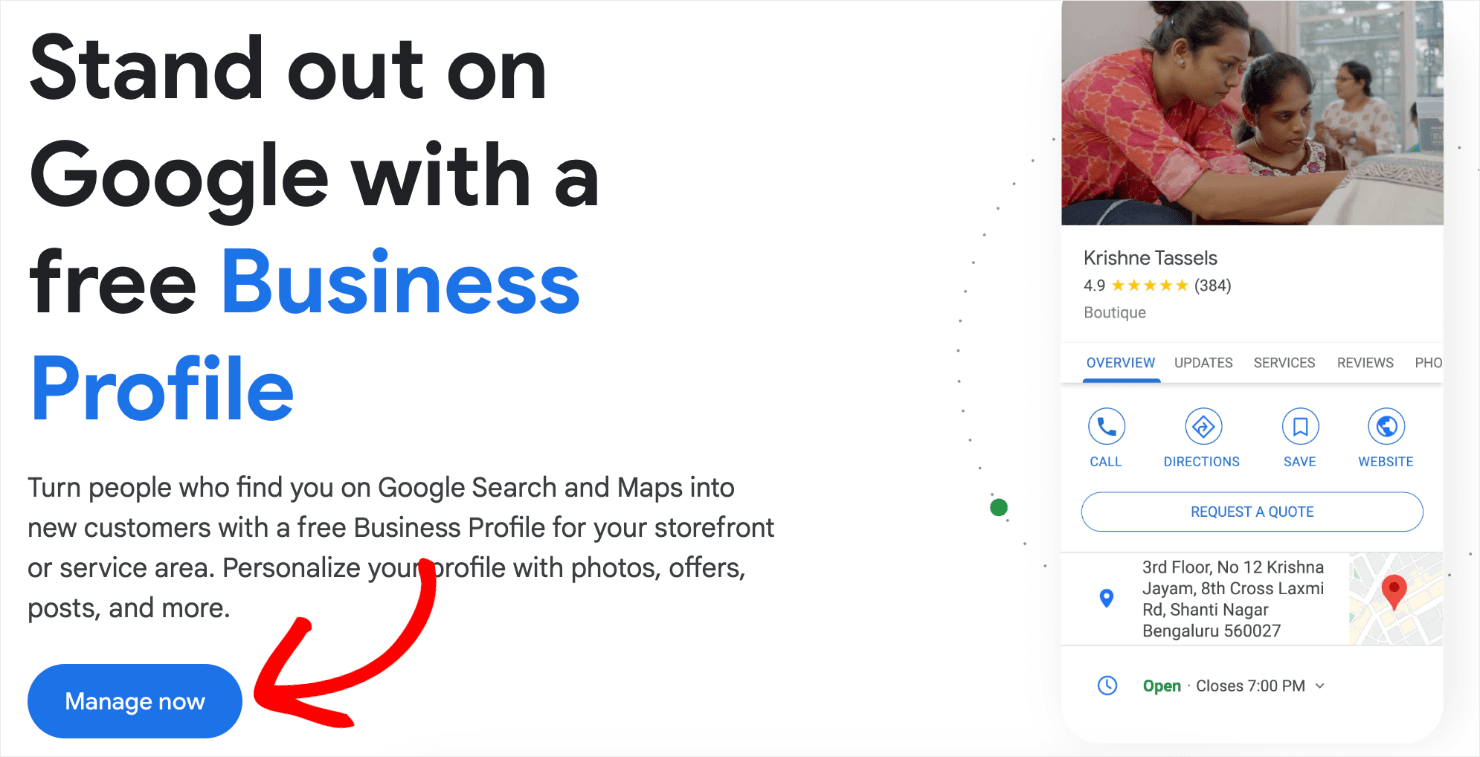
Here’s how to optimize your Google My Business page based on the 3 areas that factor into those rankings:
Relevance
To optimize for relevance, be specific.
- Choose an accurate category.
- Add relevant keywords.
- Include detailed business info.
Google prioritizes complete and informative listings. Ensure that you have claimed your Business Profile and filled out every section.
Distance
Google wants to make sure that the businesses ranking locally are actually local businesses.
Because of this, I recommend you create a landing page for your business that includes your physical address. If you have multiple storefronts across different locations, create multiple landing pages with their corresponding addresses.
Once the pages are ready, link them to your Google My Business profile as well as their other profiles on the web.
For instance, if you have a restaurant in West Palm Beach, create a landing page just for your West Palm Beach folks. If you have a takeout restaurant in Miami, create another page for that outlet and link both pages to your Google My Business profile.
Prominence
Optimizing for prominence is all about attention to the details: images, reviews, citations, and links should all be high-quality.
Add high-quality, attractive photos that showcase your storefront, team, products, and happy customers.
If it applies to you, select additional attributes in your Google My Business profile to further define your business. This can be things like having wheelchair accessibility, free Wi-Fi, or online appointments.
Finally, encourage your customers to leave positive reviews. Respond to all reviews, both positive and negative professionally to drive more visibility for your Google My Business page.
Here are the results when you search for “salons near Kent, Ohio” in Google. The salons that come up at the top of the search page are the ones that have optimized their Google My Business profiles for relevance, distance, and prominence:

2. Use Location-Based Keywords on Your Site
Location-based keywords are great for both offline as well as eCommerce businesses.
Location-based keywords are anything that directly relates to your location. The city name is an obvious one, but there are so many more.
If you were based in St. Louis, you might want to talk about The Arch, the STL Cardinals, or Forest Park. For Seattle, it may be the Space Needle or references to the ‘Big Apple’ for New York City.
You can use these keywords in product descriptions, company profiles, or service delivery areas and they should show up naturally in the headlines and text of your pages.
If it doesn’t sound like something you would say out loud to someone in natural conversation, it probably doesn’t belong on your site.
Here’s an example of how this works. Depending on where you are, you might see the following results in the search engine result page (SERP) when you type “Raleigh tow service” in Google:
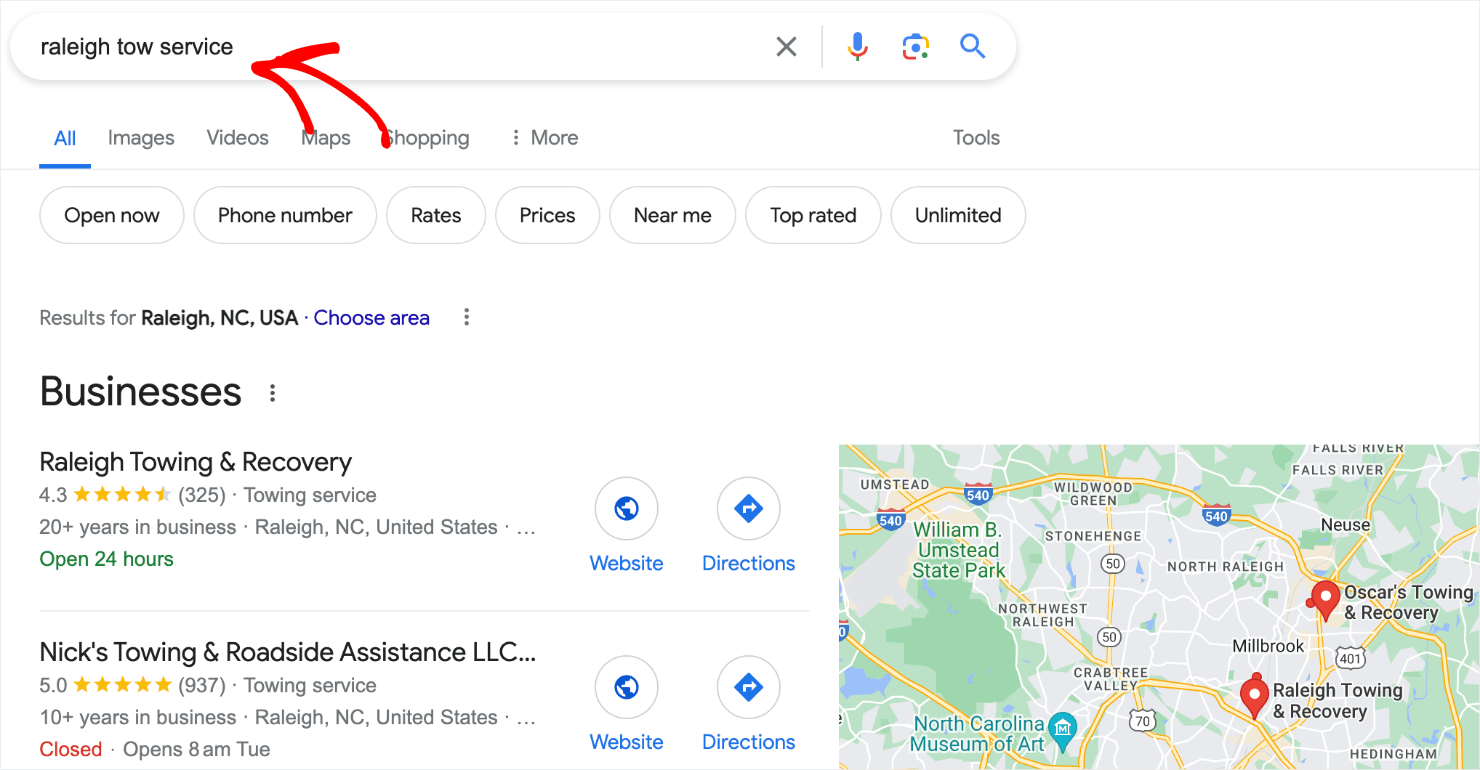
If you scroll down further, you’ll see local towing businesses that are named after the city to better their chances of ranking in Google:

All these methods help Google find you and will help you rank higher in search results.
3. Include Contact Information on Your Site
This may seem like an obvious one, but we’ve seen many sites without their contact info or business location on their website.
Even if they have a local store!
Along with location-based keywords, including your contact info goes a long way to make you easily discoverable by search engines. To make it easy, put all of your contact info in your footer, so it shows up on every page.
Here’s an example from Bittersweet Confections in New Orleans, who include their full address along with their business hours in the website footer:

Search engines like Google consider various factors when ranking websites in local searches. One such factor is location signals which helps Google understand where your business operates.
A listed geographical location acts as a clear location signal to search engines, potentially boosting your local search engine optimization (SEO) ranking.
4. Create a Consistent Customer Experience Online and Offline
Customers today expect a smooth journey, regardless of whether they are browsing your site, interacting with your social media, or visiting your store.
Inconsistency creates uncertainty and frustration, potentially leading your customers to one of your competitors.
A consistent customer experience (CX) both online and offline reinforces your brand identity. For example, a high-end clothing store might offer an elegant website experience that mirrors the in-store ambiance with helpful staff.
Nordstrom offers a great example of how to offer consistent CX across online and offline channels.
Customers can browse online, reserve items for in-store pickup, and even request alterations online:

And when you walk into one of their stores, the in-store staff can check your online purchase history and offer a hyper-personalized shopping experience.
Did You Know? OptinMonster popups are fully customizable, making brand consistency a breeze! Get started with OptinMonster now!
Maintaining brand consistency can be difficult when you have a distributed brand or a brand with both an online and offline presence.
There are a few things you can do to make sure that your branding is consistent across your website and its physical locations.
Offer a Unified Brand Identity
Develop a brand identity guide that outlines your brand voice, messaging, visuals, and personality. Ensure that the guidelines apply to all customer touchpoints, from website design to social media posts to in-store signage.
Train Your Employees
Run coaching sessions to train your staff to deliver exceptional customer service, both online and in-store. Give them the tools and knowledge to resolve customer inquiries and concerns effectively.
Gather Feedback
If you have multiple locations, you’ll most likely have differences in the marketing messages or even product offerings that connect with the local community.
McDonald’s, for example, releases different menu items in different locations, like the shrimp beef burger in South Korea or the haupia pie in Hawai’i.
Use feedback from customers and employees to figure out what different marketing efforts they may need in different locations. Create them in line with the rest of the brand materials while including the local flair.
Regularly Toss the Outdated Materials
Set a policy to print the smallest quantity of printed materials needed. Additionally, let your store managers know when you have changed or retired a marketing asset.
Recycle the old printed materials once a sale or discount offer expires. You can’t use the old ones and still hang on to brand consistency.
Always keep your digital assets up-to-date and easily accessible.
5. Create High-Quality Local Content
If you are a local brand that also sells online, creating authentic local content won’t be a problem. These are your people, after all, in your hometown.
But if you’re a regional brand reaching into a local market it can be difficult to sound like you really belong. The best way to create the content you need, and the only way to do it authentically, is to hire local talent to create the content for you.
Having a local voice behind your blog posts, videos, ads, email copy, and all of your social media posts will go a long way toward increasing trust and building relationships.
Ben & Jerry’s ice cream brand isn’t afraid to get creative with local flavors. In the past, they have launched ice cream flavors such as “Cherry Garcia” (named after a Grateful Dead guitarist from California) catering to specific regions:
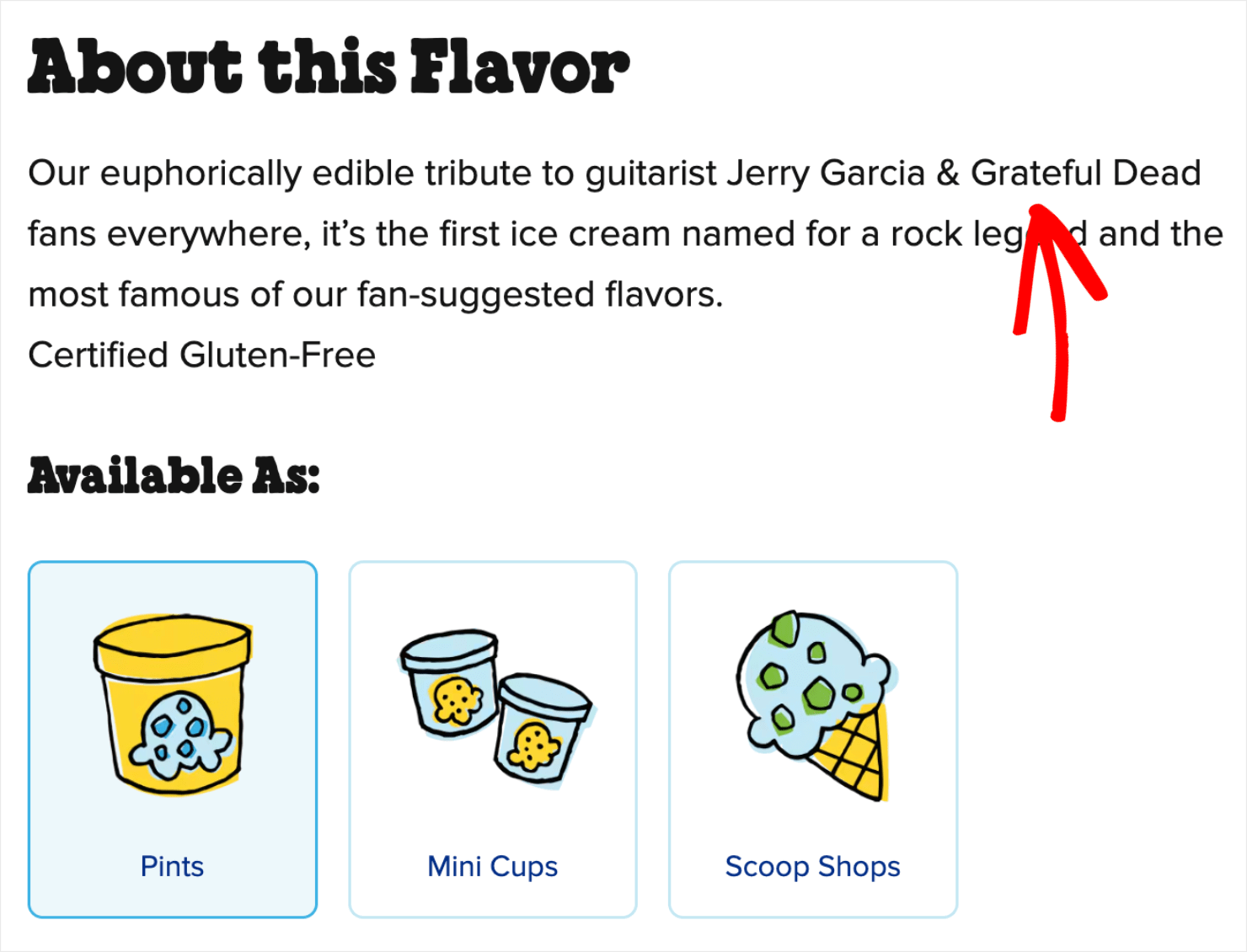
Similarly, Home Depot offers DIY guides on hurricane preparedness for coastal US city customers to safeguard their families during hurricanes:

If you can cater to the tastes of the local customers, you’ll be able to blend in as a local business and improve your brand recall among your target audience.
6. Promote Your Online Presence
Your website and social media profiles should be showing up in local searches for the areas you are targeting. If they aren’t, you’ll need to put some time and effort into local optimization strategies.
Here are a few tips on how to improve your online visibility:
Use Consistent Contact Info
The name, address, and phone number you use should be the same throughout your website to ensure that search engines are getting the right info.
After you have your own site sorted out, look at other sites listing your contact info. Both the formatting and style of the data should be identical to improve your local SEO.
Having a clickable phone number on your site can be a powerful lead-generating machine. Check out how to get more phone calls from your website to get visitors to your store!
Improve On-Page SEO
Once you have content, you need to make sure that it ranks in local searches to drive people to your site and location. You can do this with on-page SEO best practices.
On-page SEO involves including location-based and other related keywords in important areas on your site’s pages:
- Page and post titles
- Headings
- URLs
- Post and page content
- Image alt text
You can also build local backlinks to improve your online presence locally. For instance, reach out to local websites, publications, or influencers to link back to your content. This will show search engines your local relevance and help your online visibility.
7. Get Customer Reviews
Customer reviews are a great way to improve your local search results rankings.
But don’t limit yourself to Google reviews. Different platforms use different ranking systems for different reasons and they all have a positive result on your local search rankings.
For instance, if you get a lot of check-ins through Facebook, encourage your customers to leave a review on Facebook. If your business is listed on Yelp, ask your customers to rate you there. You get the drill!
And if you want to increase the number of reviews you are getting, offer incentives like a discount or a free product to customers who leave a review.
Molton Brown, a UK-based luxury beauty and fragrance brand, placed QR codes near its checkout counters encouraging buyers to leave product reviews in exchange for a prize draw.
This strategy helped the brand improve its revenue per visitor by 54% and conversion rate by 43%:
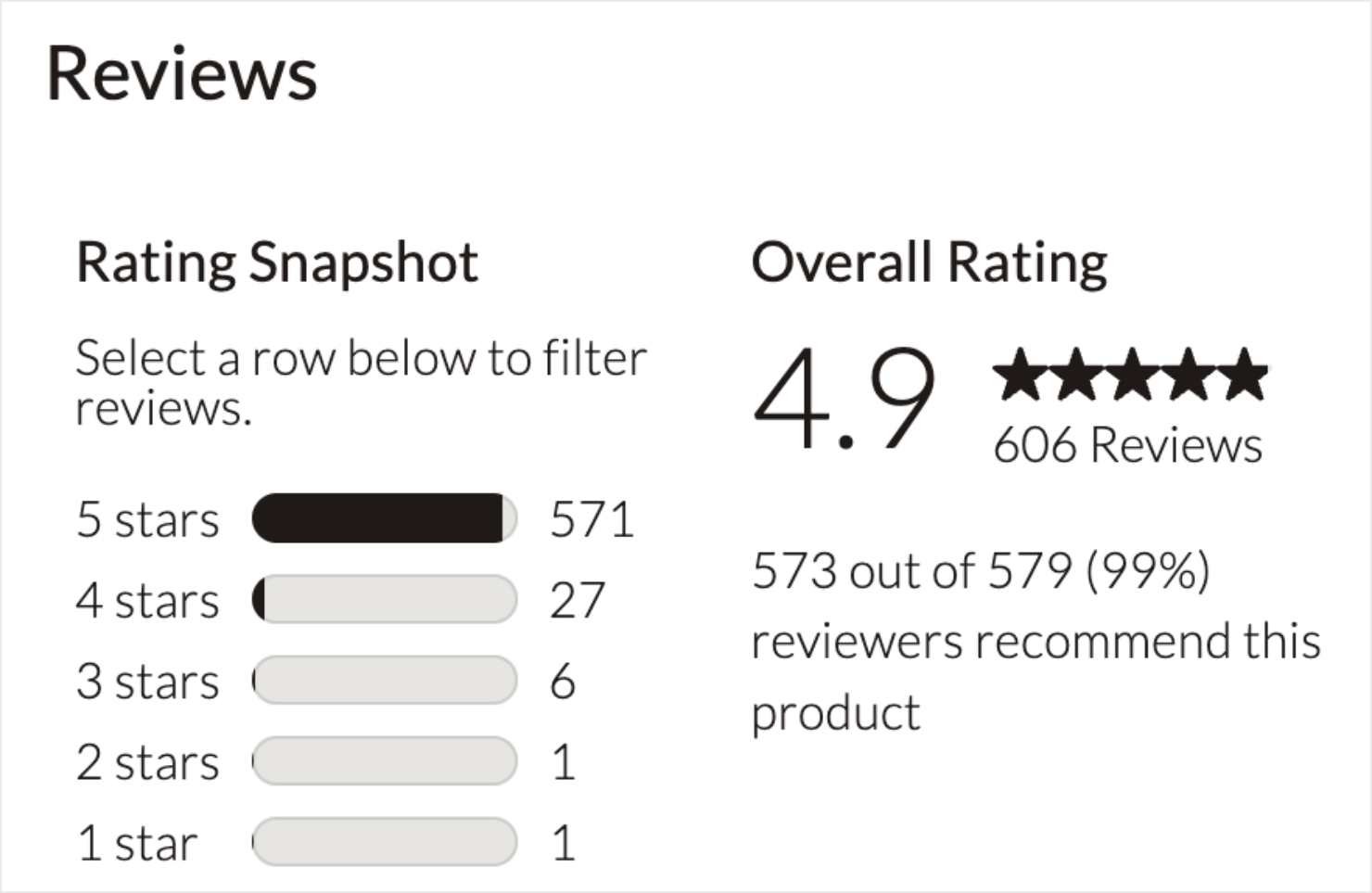
If you offer product reviews on your site, you should make it super easy for customers to leave a review. Include step-by-step directions on your website and make the review process simple and short.
Pro-Tip: You can use OptinMonster to create a popup asking visitors to leave a review. Couple that with WPForms and you’ve got yourself a super simple way to capture tons of high-quality reviews:
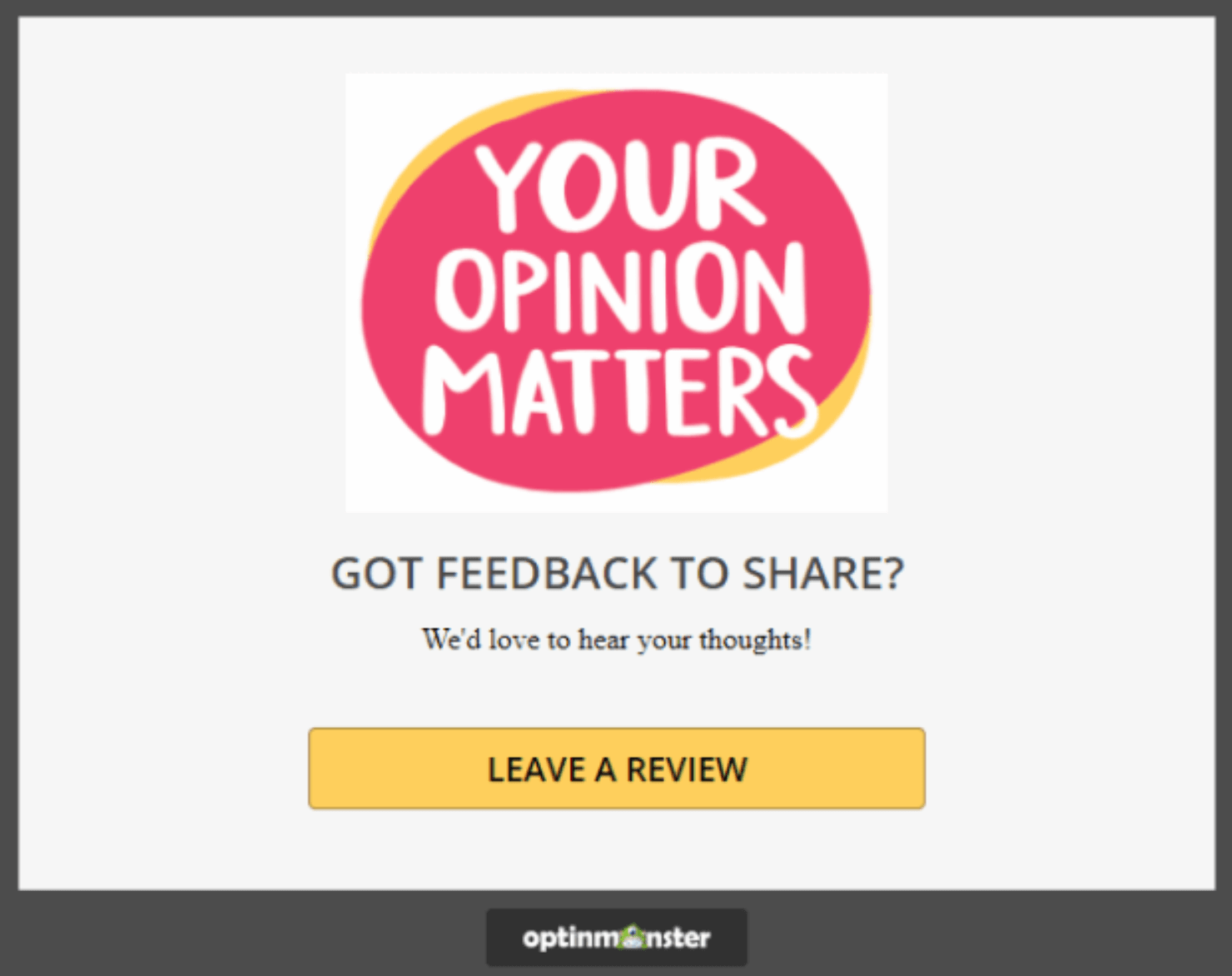
8. Target Mobile Users With Location-Based Ads
Let’s say you are out with your family for grocery shopping on a hot Sunday. Normally, you would just grab a bottle of water from the store to quench your thirst.
But because you see an ad for frosted ice cream on your mobile while you are shopping, you decide to take a short detour to get the dessert. After all, it’s located less than a mile from the supermarket and it’ll make the kids happy.
That’s exactly how powerful location-based mobile ads are. They help you reach people who are already near your business or interested in what you offer at the exact moment they need it.
You can use a combination of GPS coordinates and location-based tracking features that we enable in our mobile devices and apps to set up a hyperlocal targeted ad area.
This kind of targeting can result in a higher advertising return on investment (ROI) and more sales!
So, how do you do it?
First, define the target area you want to cover. Then use triggers that will send users text messages, app notifications, and email alerts to their mobile devices when they enter that zone.
Assuming you have the marketing budget to invest in ads, here are 4 cool ways you can use location-based ads to target mobile users:
Target Nearby Users
This is the most obvious use of location-based advertising.
To do this, set your boundary within a certain distance of your location. Next, use your existing customer knowledge to set the rest of your criteria for your ad.
There are lots of reasons you would want to target certain users near your location:
- Driving them to your store.
- Creating brand awareness.
- Generating buzz of a ‘coming soon’ store.
Target Users Near an Event
If you deal in the business-to-business (B2B) domain, you might want to take special notice of this approach to location-based ads.
If a local event or conference is going on in your city, why not run a location-based ad targeted at the local area?
Here’s an example:
Let’s say you own a ride-sharing app in several cities. If you know that there’s a major tech conference happening in downtown Nashville, you can run Google ads targeting the event participants.
You can even run a special ad campaign on social media platforms offering special discounts to personalize the customer experience and drive more bookings.
Target Competitor Locations
This is an excellent way to get bottom-of-the-funnel traffic that’s ready to buy into your store to make their purchase.
If you have competitors that you outshine, run a location-based ad in their specific location highlighting the advantage of shopping with you to pull shoppers to your store.
A few years ago, Chipotle restaurant brand followed this strategy to win new customers over from its rival brands. They placed a billboard on the interstate in Nashville with a simple message that talked about Chipotle’s fresh-made food:

Target Traveling Users
Targeting users who are traveling is a must. People who are traveling usually have a lot of free time and are just looking for ways to fill it.
For these ads, you’ll need to target tourist-heavy areas like airports, hotels, and attractions. Ads like these would work even better if you could partner with other businesses to offer discounts to tourist favorites in your city.
Think of New York’s Metropolitan Museum of Art (MET) running local ads about their latest exhibition in the subway trains, the Grand Central Terminal, and across the city’s bus stations:

Use OptinMonster’s Geo-Location Targeting Features
If you are looking for a way to target visitors to your site based on their location, OptinMonster has you covered. And it’s a lot more cost-effective than running targeted ads like the ones we just covered.
OptinMonster’s geo-location targeting features make it easy to use location to boost sales.
That’s exactly what Skates.co.uk did.
The brand used the geo-location functionality to target a user’s country, assuring visitors that their orders would get to them soon.
To make sure they are targeting the right companies, the skating brand looked at where visitors to their site were coming from. Then, they created targeted campaigns to reach the local audience:
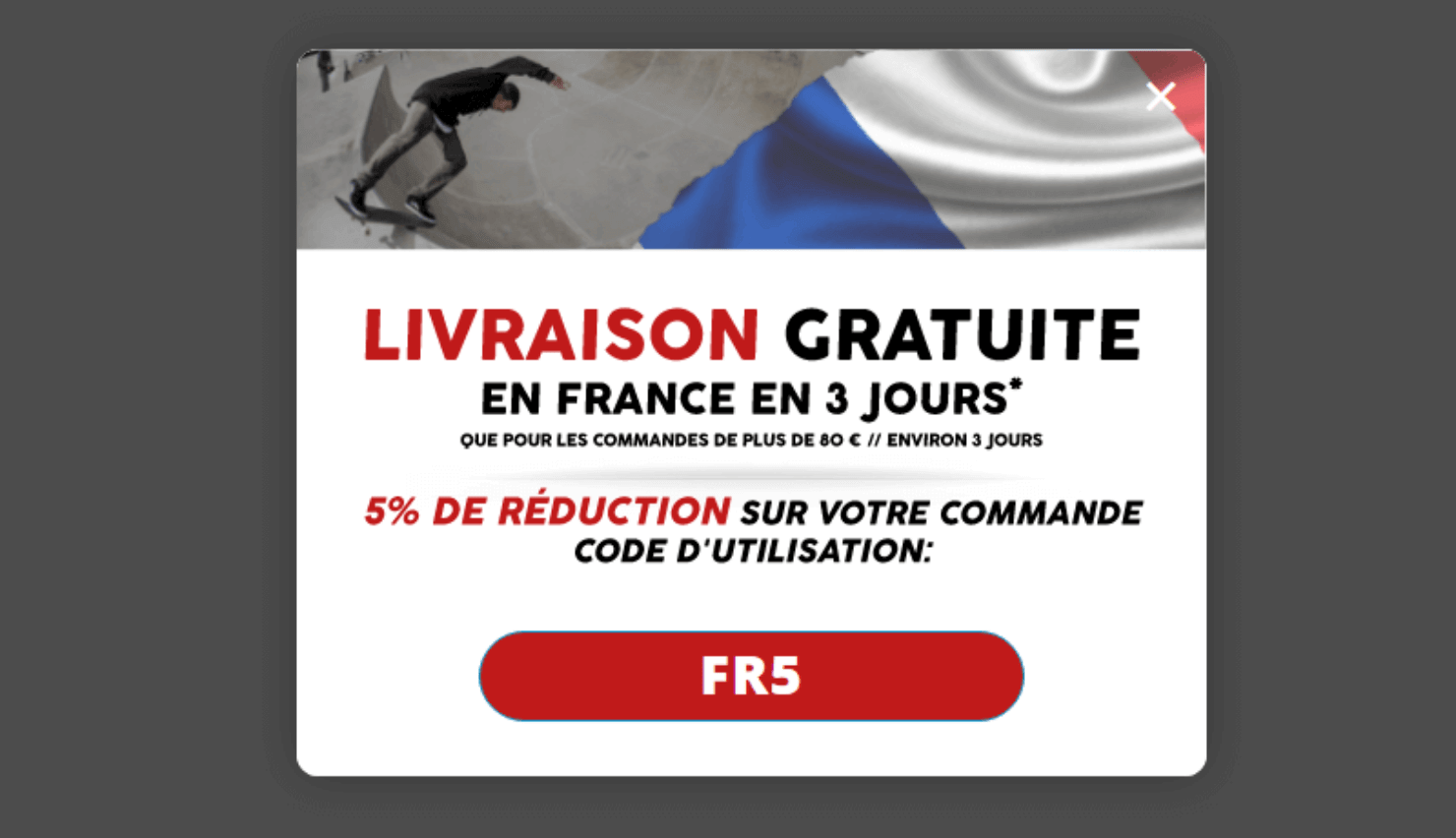
Here is the popup window targeted to display only to visitors from France:
With OptinMonster’s display rules, creating optins targeted by location is easy.
To read more about geo-location targeting in OptinMonster, read our blog on What Is Geotargeting? A Powerful Marketing Tool for Conversions.
Tap Into the Power of Hyperlocal Marketing
If you can apply these 8 hyperlocal marketing campaigns that we just discussed, you’ll be able to boost your sales and drive more foot traffic to your physical store.
If you liked this article, you might also want to check out the following posts:
- What Is Content Marketing Strategy and How To Create One
- How To Make Popup Coupon Promotions That Drive Sales
- How To Make a Small Business Website
- 11 Social Media Metrics You Need To Nail Your Marketing Goals
- How To Win Customers’ Loyalty with Your Refund Process
Want to encourage your customers to leave reviews for your business? You can trigger a popup to remind them every time they visit your website.

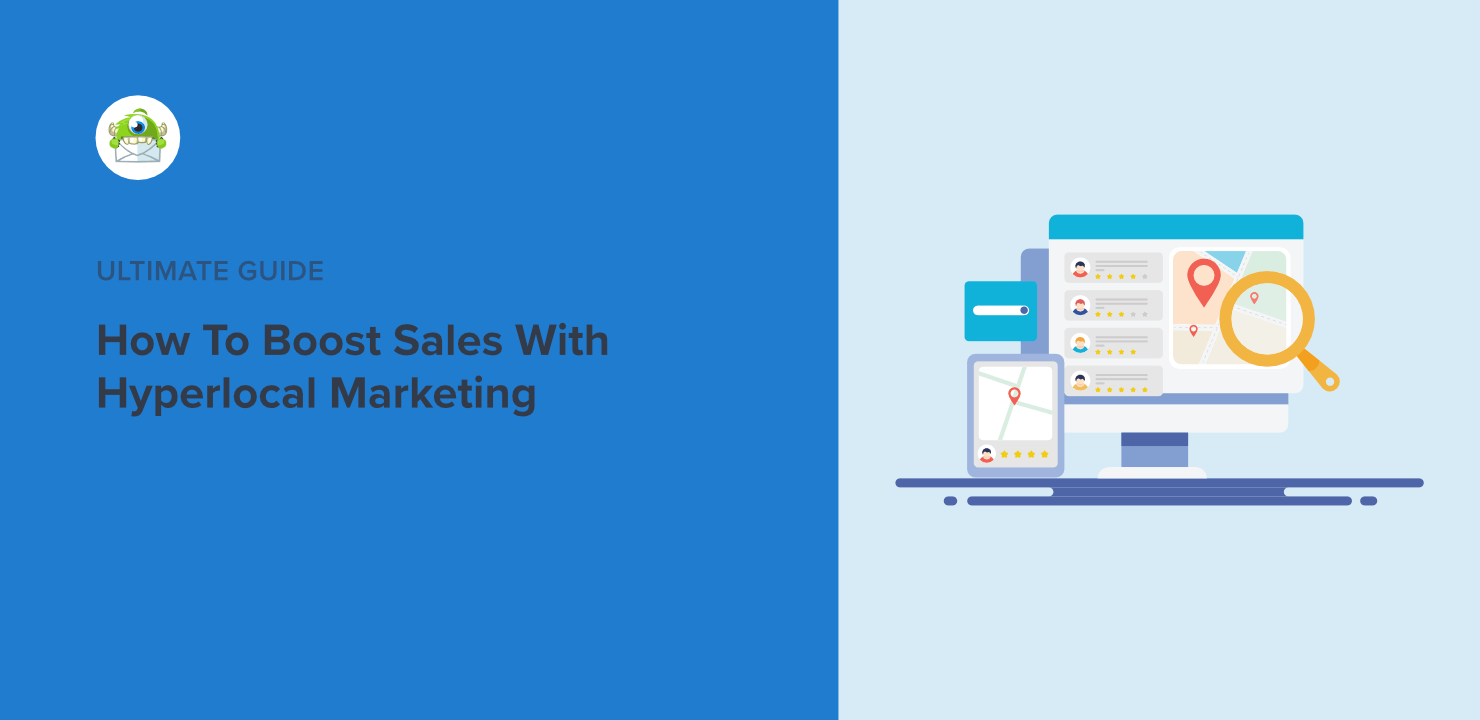
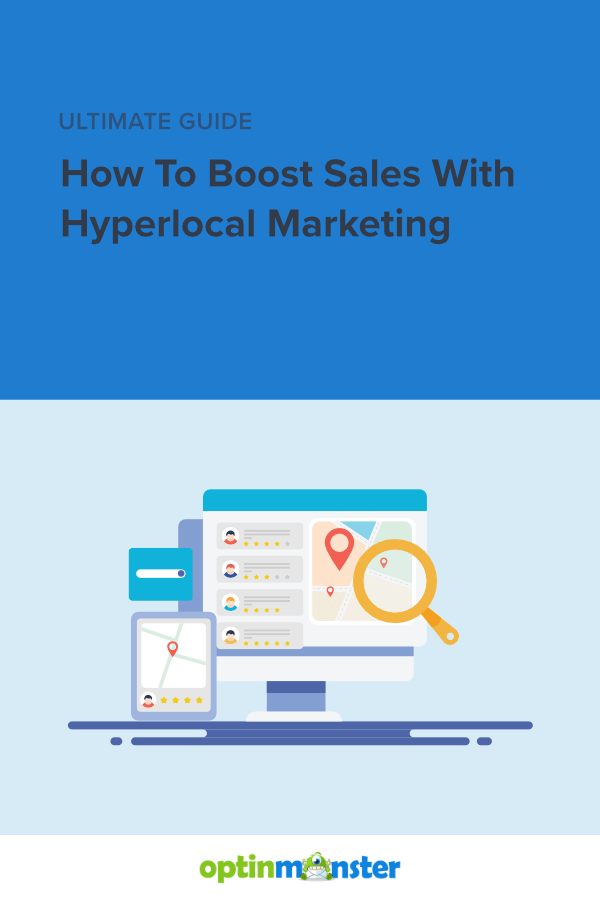








Add a Comment